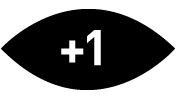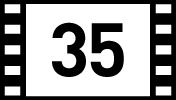

Actor Robert Montgomery’s directorial debut is one of the most ill-advised cinematic experiments ever released. The idea of shooting an entire feature from the POV of the main character had been kicked around for years in Hollywood, but it was not until this adaptation of Raymond Chandler's detective novel that someone actually tried it. Perhaps Montgomery figured it would be an easy way to direct and star in his first film, as his character is only visible on camera a few times when he addresses the audience and the few times the character is visible to himself in a mirror. Montgomery claimed the idea was to create the visual equivalent of the first-person narrative approach Chandler used for all his Philip Marlowe books.
Regardless, the gimmick doesn't work at all. For one thing, even with the clever shooting techniques developed by cinematographer Paul Vogel and MGM head of photography John Arnold, the movie camera doesn't mimic the human eye at all. The subjective camera has been used effectively in hundreds of movies, but mostly as a way to reveal to an audience, usually very quickly, exactly what a character is seeing at a specific moment. Blocking entire scenes from the protagonist's point of view renders a film in which the characters all seem to be moving in slow motion. This uncanny feeling was inevitable since it takes about three times longer for a camera dolly to slide smoothly into a room than it takes a normal human to do the same. When a man turns his head to see something, he does it about eight times faster than a camera can, unless it's doing a whip-pan. When we take out a cigarette or open a door or even pick up a gun, we don't linger on these items the way a camera does when conveying what's happening to an audience. A camera sees things within a specific frame, whereas we have peripheral vision.
These limitations of camera movement make Lady in the Lake feel criminally slow. The fact that the subjective style all but requires that no editing can occur within each scene makes the 105-minute picture feel interminable. But it's the way the actors interact with the camera itself that makes the picture a joke. One by one, each cast member stiffly steps into a shot and delivers all their dialogue directly into the lens, with Montgomery clearly behind the camera delivering his lines. A few actors—particularly Lloyd Nolan playing a corrupt cop—can seem somewhat natural while doing this. But the majority of the cast looks awkward as hell. Great acting is about listening and reacting, but in this movie, each actor just seems like they're waiting until Montgomery is finished with his line before they react. It's as if no one is actually listening, and every conversation is one-sided. The worst culprit is Montgomery's costar Audrey Totter. In scene after scene, she says her line, waits for his rejoinder, and then reacts with comical bug-eyes or arched eyebrow raises that make her look ridiculous.
Everyone overacts in this picture, even Montgomery from off-camera. And, aside from the novelty of the trick shots in which we see Montgomery's reflections, the movie is about as visually flat as one can imagine—especially when you consider this is an MGM picture from the 1940s! Interestingly, this same year Delmer Daves shot much of the first half of his noir mystery Dark Passage with a subjective camera, as he didn’t want to reveal his escaped prisoner protagonist played by Humphrey Bogart until the character had plastic surgery to look like Bogie. The technique works in that film because Daves isn't slavishly devoted to it as a style, allowing him to cuts away from the POV when needed. The director was also much better able to direct his actors to seem more natural looking into the camera and seeing Humphrey Bogart. Perhaps that's because Daves wasn't also trying to act in the scenes with them, I don't know.
There is nothing about Lady in the Lake, apart from the novelty of its approach, to recommend it or even make it worth seeing. After about ten minutes you get everything this picture has to offer, which is almost nothing. There is not one minute of film that feels alive or credible. It is astounding to me that Montgomery and the studio didn't abandon the subjective camera gimmick after the first day's rushes. How could anyone think this was working?
Twitter Capsule:
In one of the most ill-advised cinematic experiments ever released, Robert Montgomery shoots his Raymond Chandler adaptation entirely from the POV of protagonist Philip Marlowe, whom he also plays.








